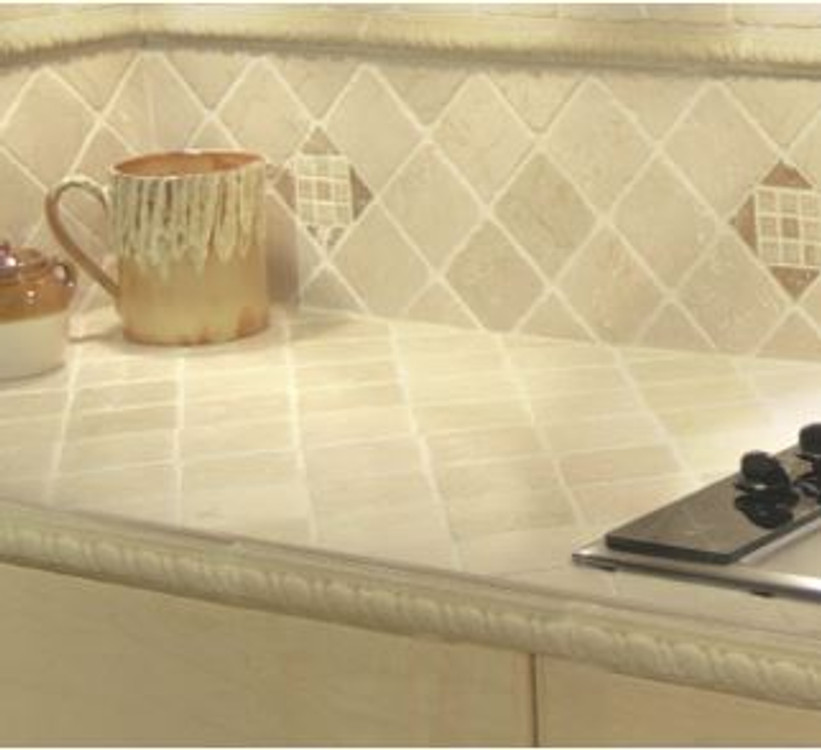Mining Travertine Tile: From Quarry to your Home
Posted by TOA's Blog Team on Jun 26th 2024
Travertine is truly a classic product, so much so that it inspires interpretations in porcelain. No wonder when you realize what goes into bringing it from a quarry to your home. This article will highlight the process of this beautiful tile product to better appreciate it.
Mining Travertine Tile
Have you ever wondered where that beautiful Travertine comes from and how it becomes a series of tiles that you can use for a kitchen backsplash, a shower or a floor?
Here’s a brief overview of the Travertine mining process and the steps that go into creating Travertine tile.

Travertine Tile: A Type of Limestone
From 13 Facts About Travertine Tile, you know that Travertine is a type of limestone that forms in hot mineral springs around the world. Furthermore, the majority of Travertine imported to the US comes from quarries in Italy, Iran, Mexico, Turkey, and Peru, where this natural stone is quarried.
These quarries produce Travertine that varies based on factors such as color, quality, depth of vein – all a result of the geological variations associated with each quarry.
How Is Travertine Tile Mined?
Travertine is mined using one of four primary methods: Channeling machines, Wire Saws, Chain Saws and Water-Jet Cutting machines.
- Channeling Machines have a series of drill bits for making vertical and horizontal holes. Wedges are then placed in the horizontal holes until the block separates and can be removed from the quarry wall. During the winter, freezing water is sometimes used to separate the block.
- Chain Saws are similar in concept to the portable ones used for trimming trees. Quarry Chainsaws are much larger and have special diamond blades designed for cutting stone.
- Wire Saws are commonly used to cut stone into manageable blocks for transport to a mill or warehouse. Access holes are drilled and the diamond impregnated cables (sometimes called blades) are pulled through and attached to the saw. The saws used for this kind of work are huge and are either continuous or oscillating (reciprocating). Once the bottom of the slab is cut, the back can be drilled cut or blasted free.
- Water-Jet Cutting Machines or water-jet cutter accelerates the natural process of erosion. Water jet machines use tremendously high powered jets of water or water and an abrasive grit of some kind to cut through metal, travertine, granite and many other substances.
From Travertine Quarry to Travertine Tile In Your Home
Once the Travertine is removed from the quarry, it is either stored in a warehouse or taken to a mill or production facility where it is cut into slabs [similar to slicing up a loaf of bread]. At this point, specialized cutting equipment is used to cut the slabs down to as many sizes as needed.
The resulting Travertine pieces are sanded to a uniform thickness and then sent through different processes depending on the type of finish desired [see Travertine Tile Finishes: honed, tumbled, polished, saw cut and chiseled edge]. They are then shipped to stores where you can select the right look and size for your project.
This 3 min video from Armenian Travertine Mining Company details the entire process:
Have you ever visited a Travertine quarry or seen Travertine Tile manufactured? What did you think about the experience?
Selecting Travertine Tile for Your Home
When it comes to selecting Travertine for your home, you have several options when you visit Tile Outlets of America.
You can select 'real' Travertine for sills, thresholds, crowns, pencils, and ogees. You'll find stunning Travertine ledgerstone, Travertine mosaics, not to mention squares, bricks, and quarry mixes.
The other option is Travertine-inspired porcelain tile that capture the look and feel of Travertine without any of the maintenance requirements - namely regularly sealing the surface.
- 12" x 24" and 24"-squares
- Gauged porcelain tile panels in 39" x 118" formats
These options offer you distinct possibilities for bringing Travertine into various parts of your home.
We hope we've intrigued you to consider this classic tile product in its different interpretations. Don't hesitate to reach out with questions.
Thanks for reading!




